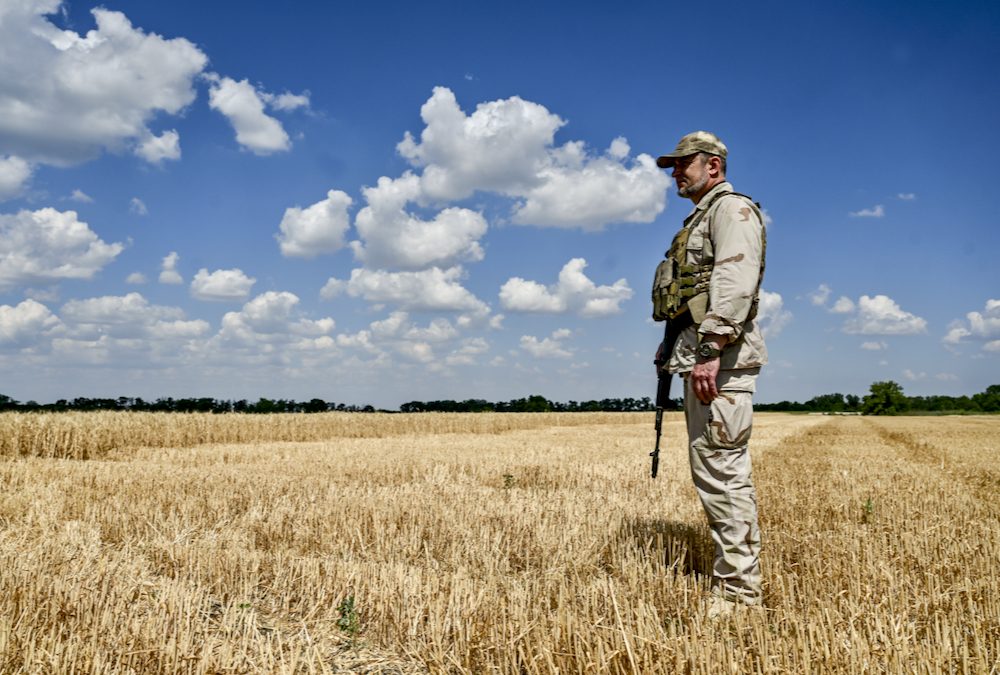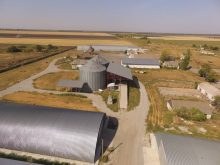Reuters – Eric Broten had planned to sow about 5,000 acres of corn this year on his farm in North Dakota, but persistent springtime rains limited him to just 3,500 in a state where a quarter or more of the planned corn could remain unsown this year.
The difficulty planting corn in the northern United States adds to a string of troubled crop harvests worldwide that point to multiple years of tight supplies and high food costs.
Russia’s invasion of Ukraine, a major agricultural exporter, sent prices of wheat, soy and corn to near records earlier this year. Poor weather has also reduced grain harvests in China, India, South America and parts of Europe. As well, fertilizer shortages are cutting yields of many crops around the globe.
Read Also

What is perfect Christmas weather?
What is ‘perfect’ Christmas weather on the Prairies? Here’s where you should head this holiday, according to historical weather data.
The world has perhaps never seen this level of simultaneous agricultural disruption, according to agriculture executives, industry analysts, farmers and economists interviewed by Reuters. They say it could take years to return to global food security.
“Typically, when we’re in a tight supply-demand environment, you can rebuild it in a single growing season. Where we are today, and the constraints around boosting production and (war in) Ukraine … it’s two to three years before you get out of the current environment,” said Jason Newton, chief economist for fertilizer producer Nutrien.
United Nations Secretary-General Antonio Guterres said recently that the world faces an unprecedented hunger crisis, with a risk of multiple famines this year and a worse situation in 2023.
Ahead of a crucial North American harvest, seeding delays from Manitoba to Indiana have sparked worries about lower production. A smaller corn crop in the top-producing United States will ripple through the supply chain and leave consumers paying even more for meat because corn is a key source of livestock feed.
Global corn supplies have been tight since the pandemic started in 2020, due to transportation problems and strong demand, and are expected to fall further. The U.S. Department of Agriculture (USDA) expects end-of-season U.S. corn stocks to be down 33 per cent from pre-pandemic levels in September before this year’s harvest, and down 37 per cent in September 2023.
Planting delays
In North Dakota, corn would normally be at least knee-high by mid-June, but only about two-thirds of the state’s crop had emerged from the ground at the end of June.
It was late May before Broten was able to plant any corn, and he traded in his seed for shorter-season and lower-yielding varieties twice before finally deciding it was too late to plant more. Ideally, he would have finished corn planting by the first week of the month. He could not wait any longer for fields to dry out.
“We were pushing the envelope, working ground that was way too wet, just trying to get a crop in,” Broten said, noting that wheel tracks are still visible in his corn fields where his farm machinery compacted the saturated soil.
“Our production goals for the farm are going to be way down.”
The slow spring planting pace forced USDA to lower its national corn yield outlook last month by four bushels per acre. That cut alone slashed the U.S. harvest potential by more than nine million tonnes, or equal to almost half of China’s record U.S. imports last year.
The Biden administration encouraged planting as a means to temper food price inflation, already the highest in decades. The government lifted restrictions on planting on environmentally sensitive land, increased funding for domestic fertilizer production and made more counties eligible for insurance when planting a second crop this year.
But the benefits have been minimal. Conserved acreage is limited and the soil can be less productive, while farmers are hesitant to risk double-cropping when seeds and crop chemicals are so expensive.
U.S. farmers may also leave unplanted some 3.2 million acres earmarked for corn and will instead file insurance claims that compensate them when weather prohibits planting, according to University of Illinois economists.
An abnormally large share of unplanted corn acres will likely be in North Dakota, while crops that were planted have an “elevated risk of damage from an early-to-normal frost,” the economists said in a report.
The problems extend to Canada, where heavy snowfall through April was followed by a May rainstorm that washed out Gary Momotiuk’s fields and forced him to relocate panicked cattle in the middle of the night.
“It was just wild how high the water was,” said Momotiuk, 49, who farms near Dauphin, Man. “It was probably the first time we could catch fish right in the farmyard.”
In mid-June, Momotiuk still had 1,200 acres unplanted. He abandoned plans to sow canola and wheat because they would not have time to mature. He hoped to seed barley to feed his cattle.
Manitoba left 880,000 acres unplanted, the most in eight years and representing nine per cent of the province’s insured farmland, according to its agriculture department.
Cassandra Lepp, who farms near Rivers, Man., said her family’s custom application business planted crops by airplane for other farmers for the first time in a decade after the spring rain deluge.
Seeding by air enables farmers to produce a crop in challenging times, but the practice is costly and lacks the precision of traditional planting on dry fields, resulting in lower germination and lower yields.
“It definitely seems like the weather is getting more extreme,” Lepp said. “We just have to pivot really fast.”
High input costs
Farmers may struggle to rebound from this season’s challenges as costs for inputs, from fertilizers to fuel, remain elevated. Grain output may suffer if margin-squeezed farmers cut back.
Scott Kay, vice-president of U.S. crops for BASF, warned a shortage of herbicide that protects crops from weeds would likely persist.
Ukraine’s grain output could take years to rebuild after fighting wrecked crop handling, storage and shipping infrastructure in a country that accounted for as much as 17 per cent of global corn exports and 11 per cent of wheat exports before the war.
Even once the war ends, global grain supplies are likely to remain tight, said Nutrien economist Newton. Efforts to slow climate change are driving up demand for crops to produce biofuels instead of food and China is importing dramatically more grain as it runs out of new land for agriculture, he said.
Juan Luciano, CEO of grain trader Archer Daniels Midland, expects global crop staples to remain in low supply for at least two years. The war will create a global wheat shortage for at least three seasons, according to Ukraine’s agriculture minister.
But North Dakota’s Broten is more concerned about next year.
“We had opportunities to buy inputs at a decent price so those costs are not going to reflect this year’s production nearly as much as next year’s,” he said. “I’m looking to see substantial increases in my cost of production for an acre of corn.”















